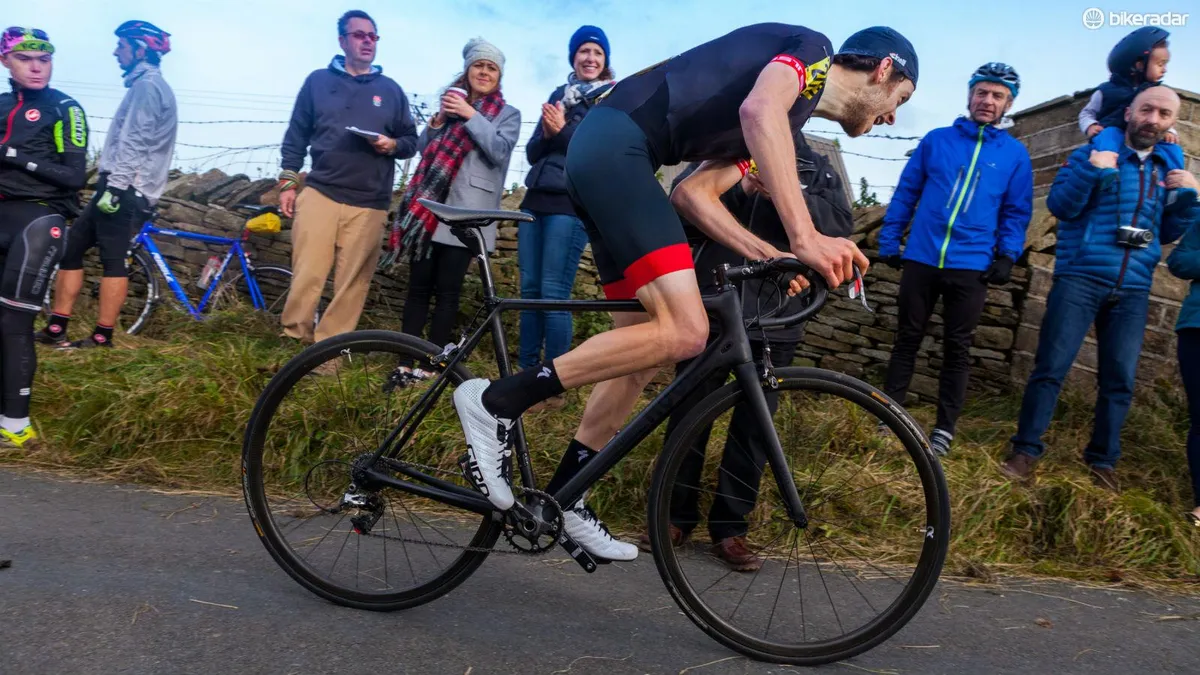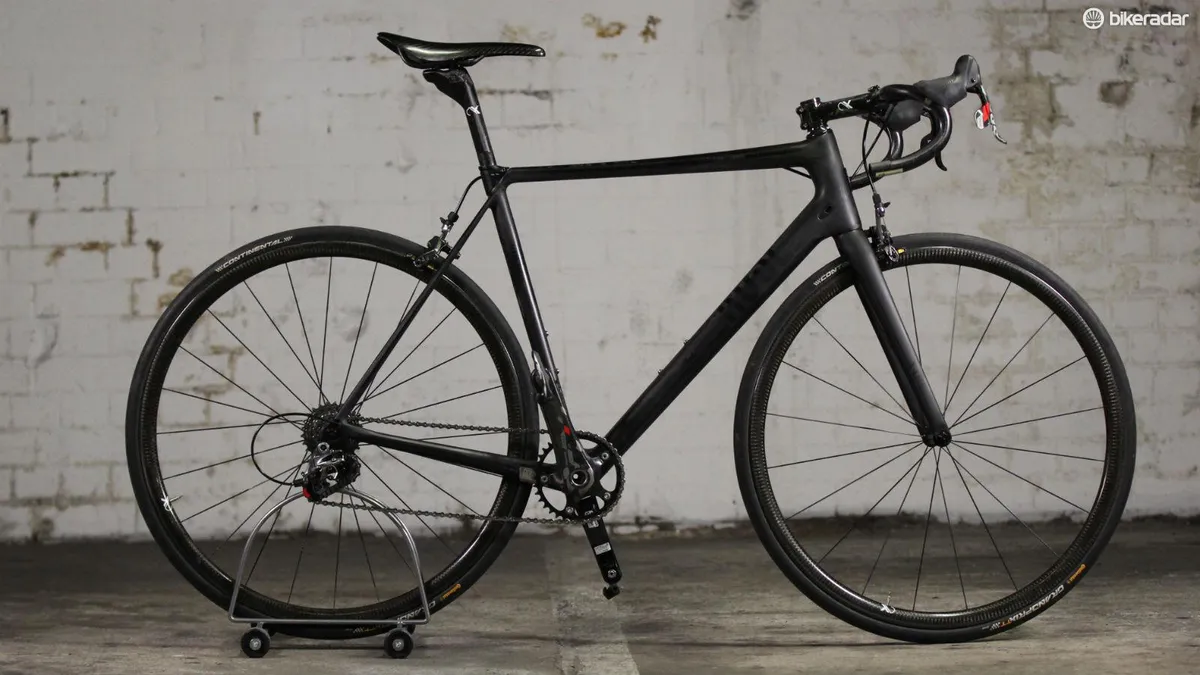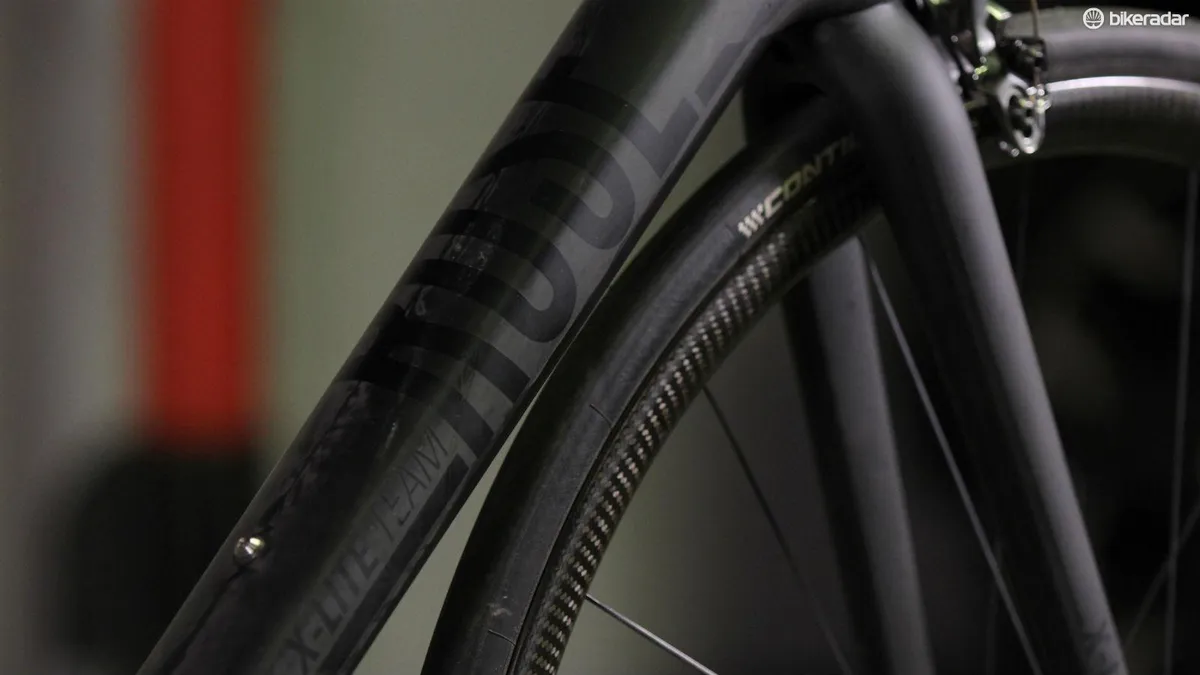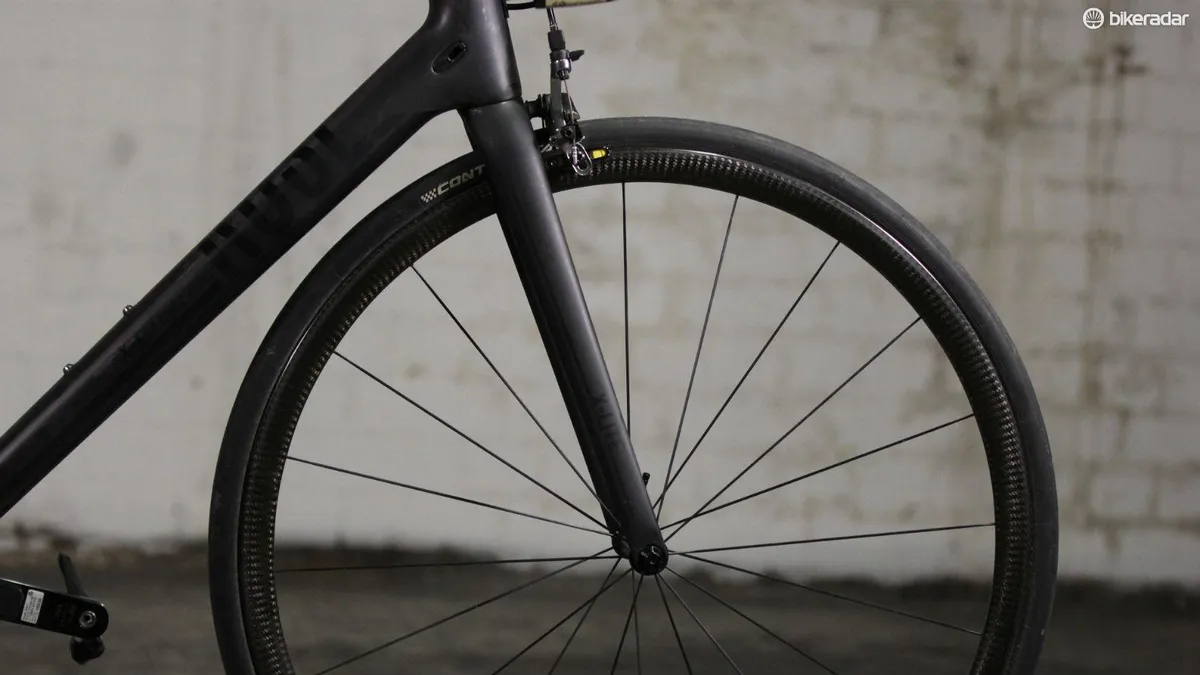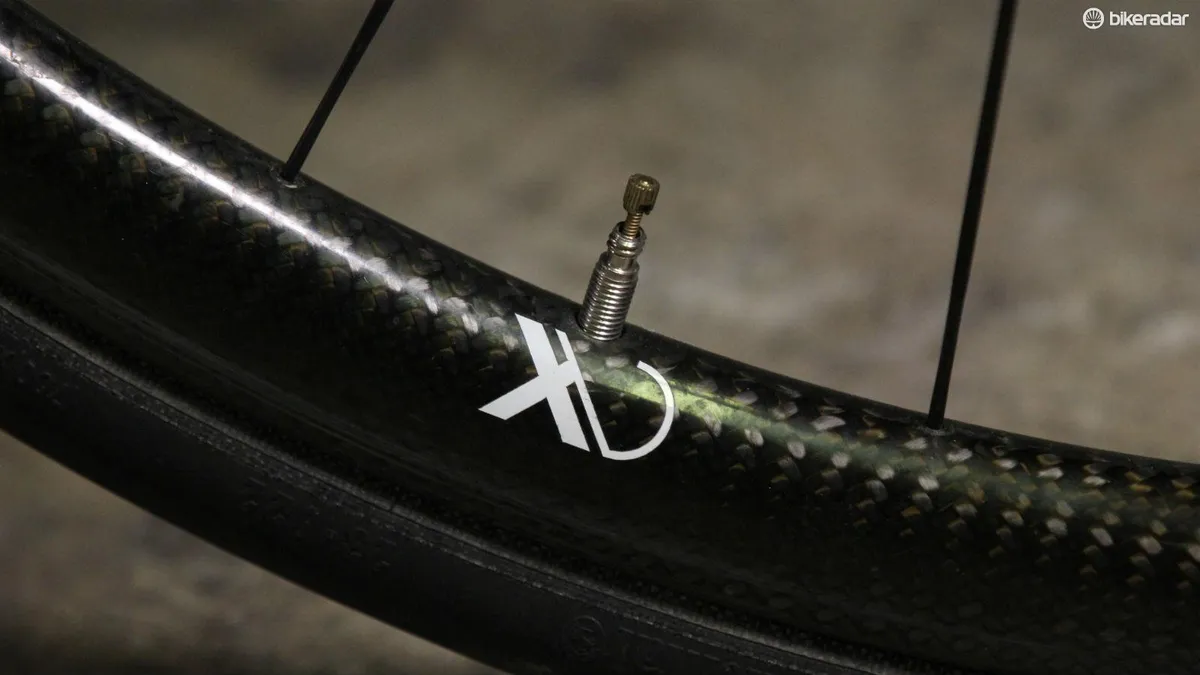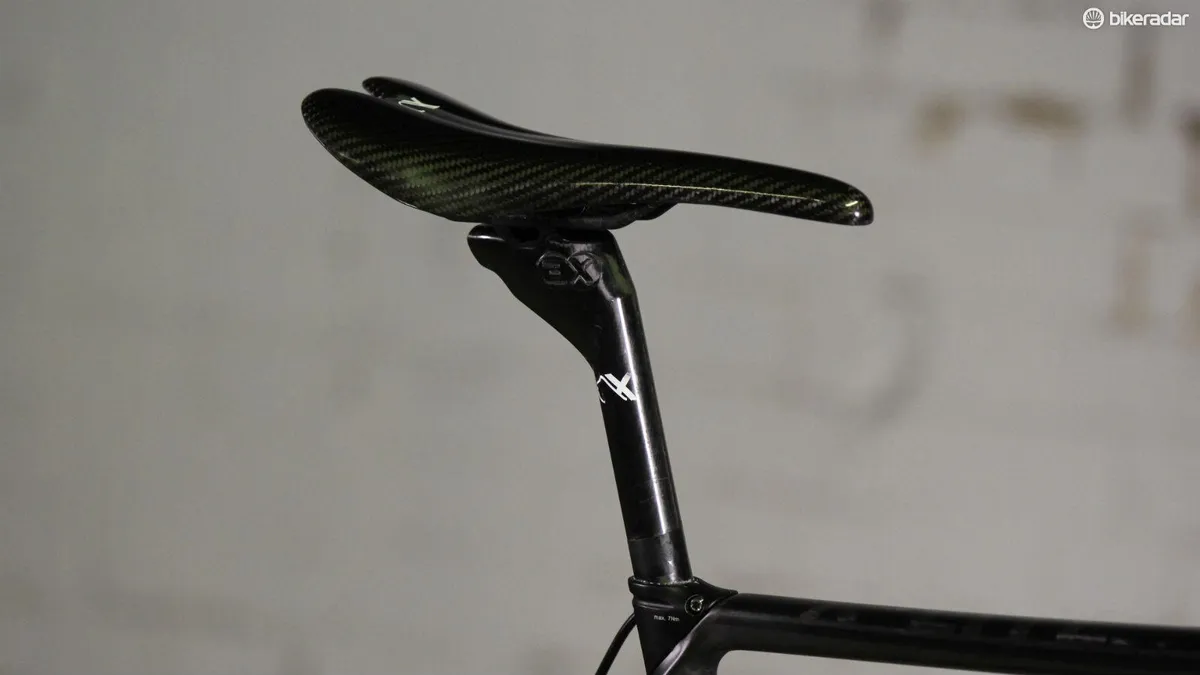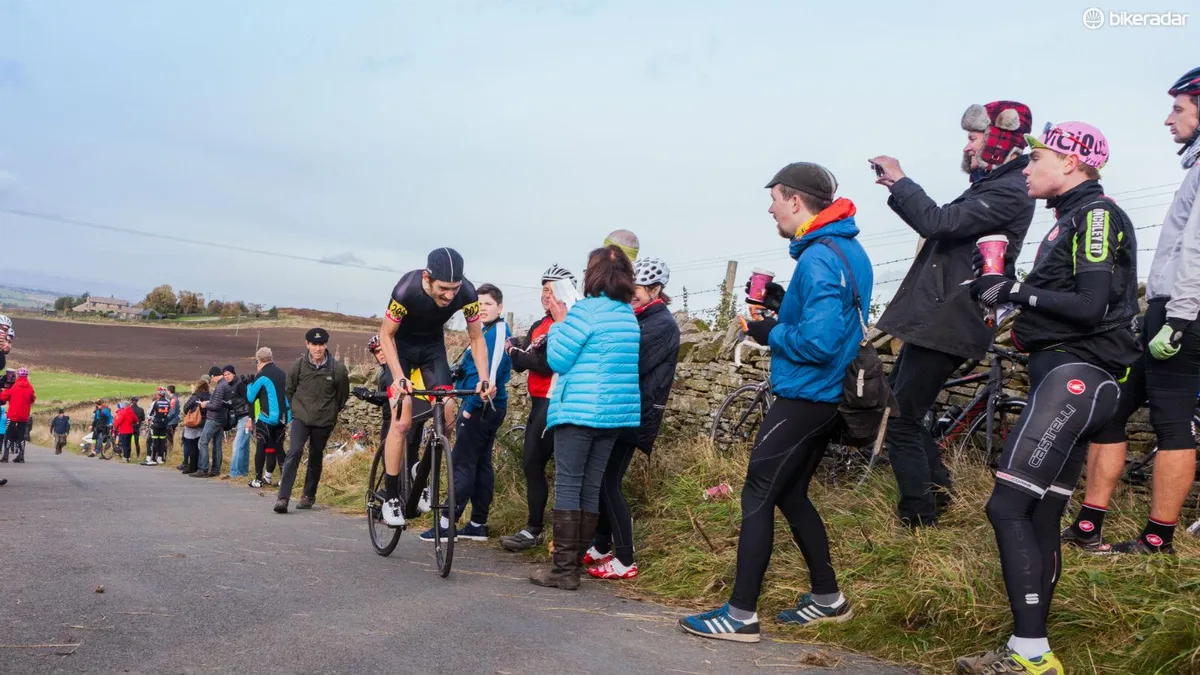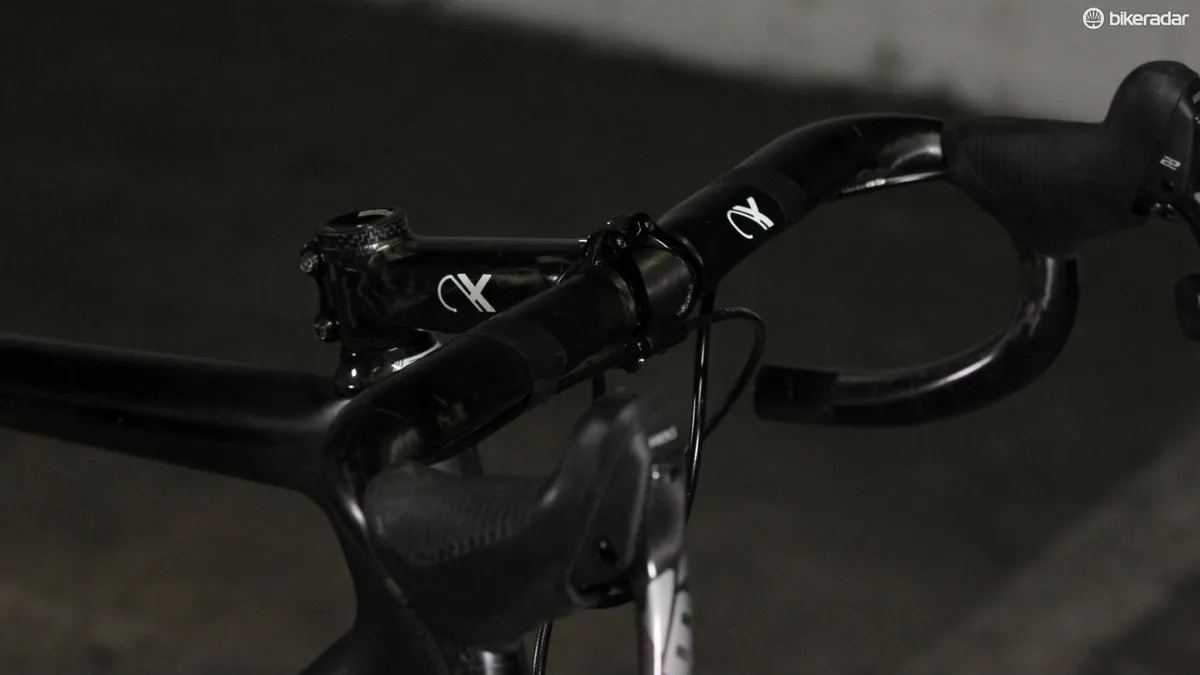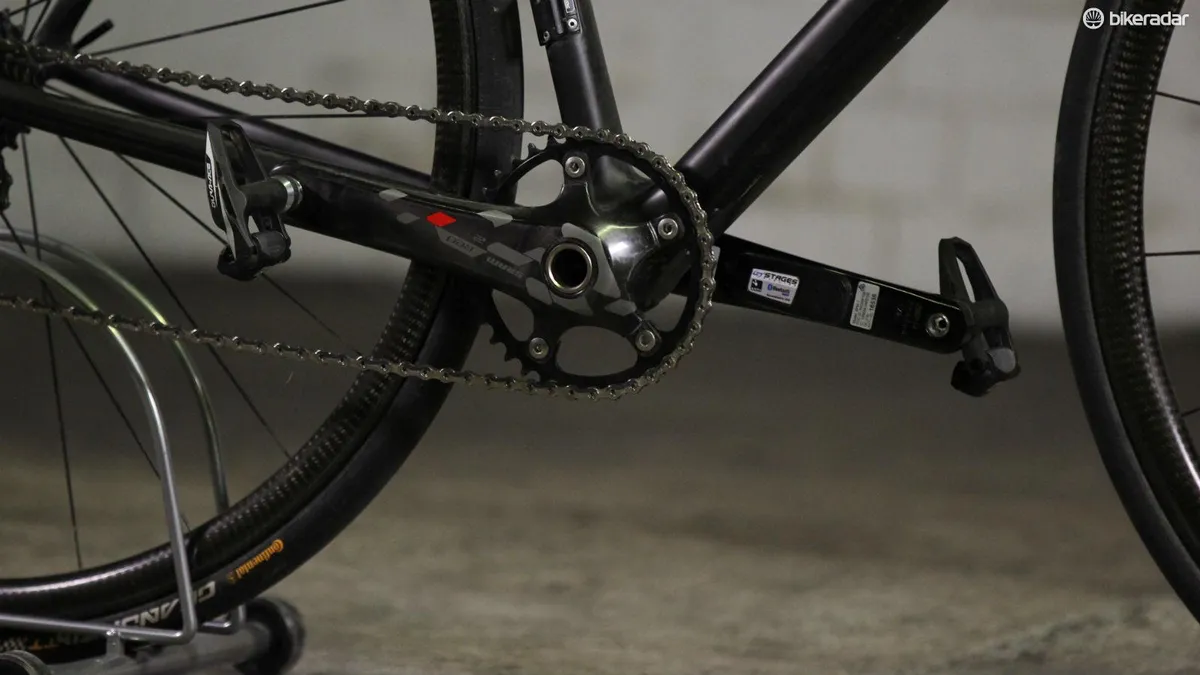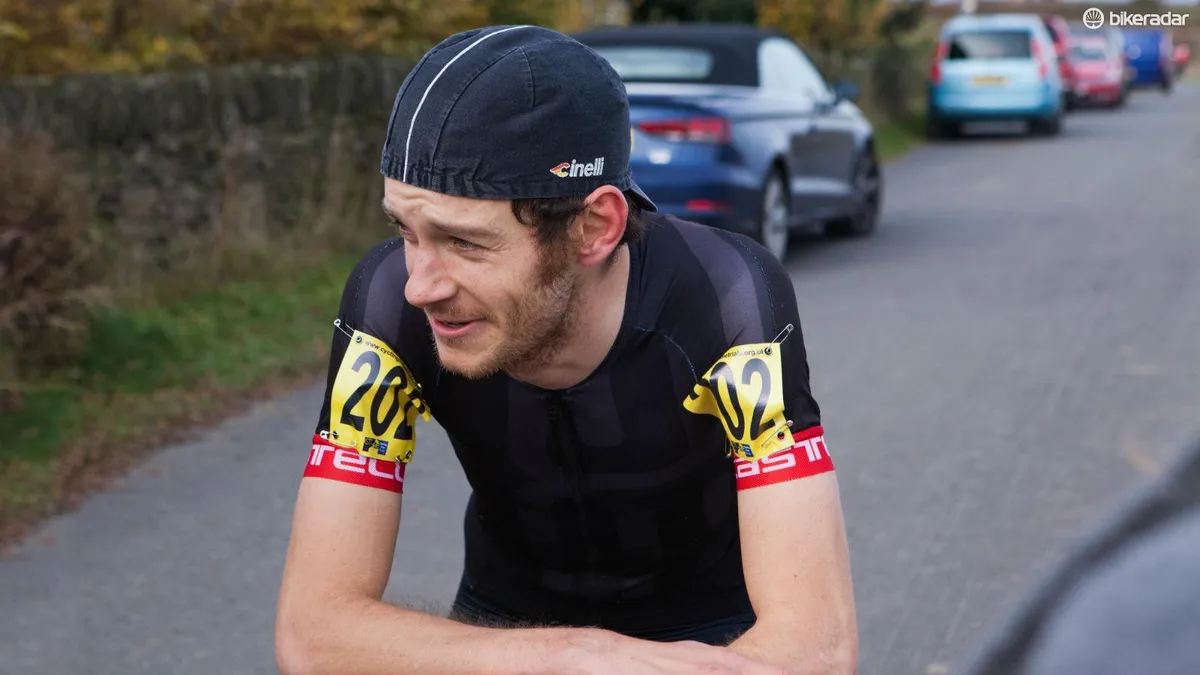The British hill-climb season is brief and intense. It’s all over in just two months and features short, often severely steep uphill time trials lasting around 2-5 minutes, where riders push themselves to their absolute limits.
Riding uphill fast is all about minimising weight while maximising power, so hill-climb bikes are rare and specialised beasts, made for anti-gravity prowess without the slightest nod to comfort, braking or handling. If that sounds like your cup of tea, read on.
- The course(s): Steep 3-5 minute hills which make up the majority of the short/painful British hill-climb season.
- The equipment goal: Create the lightest bike possible for thrashing up double figure gradients.
- The Horse: Rose X-Lite Team 8800, with a few bits added and a few bits taken off.
The first port of call when building a lightweight hill-climb bike is the frame and fork. There are plenty of lightweight carbon frames, but we needed one able to handle the lateral forces involved when thrashing out of the saddle on a 20 percent gradient. That means supreme stiffness with generous spacing around the tyres and chainstays.
null
Shaving grams
German brand Rose fitted the bill perfectly with its X-Lite Team frame and fork. We spotted it at Eurobike and immediately noticed its rear clearance and performance focused credentials. Lucky for us it also comes as a complete bike (X-Lite Team 8800) with SRAM Red (the lightest available groupset), Mavic wheels and Ritchey finishing kit.
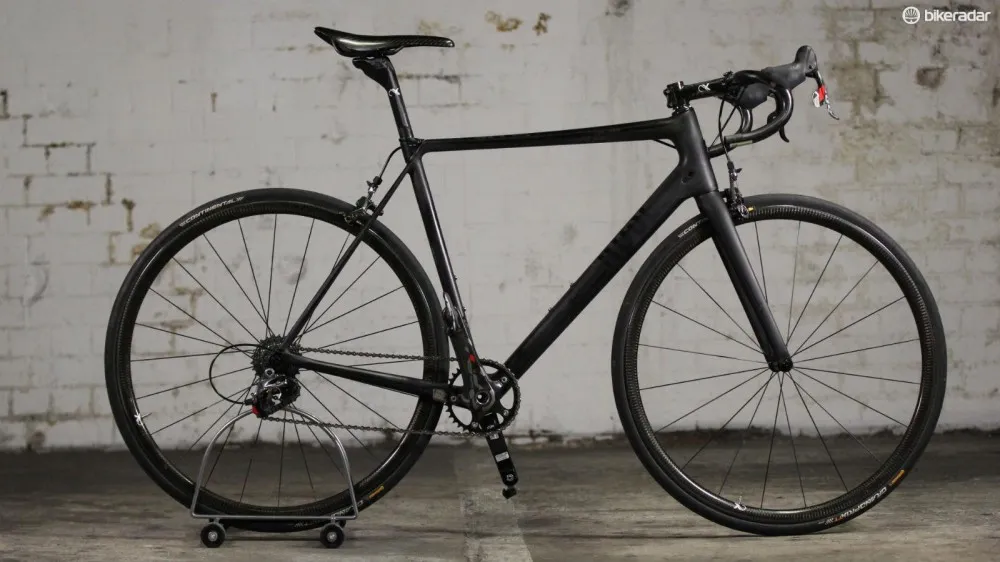
A bike put together with one thing in mind
Extra luckily, this complete bike weighed in at 5.85kg without pedals – gasp. This might seem incredibly light, but add pedals, power meter and a Garmin and you’re now looking at 6.5kg; for the weight-obsessed hill climber, 6.5kg is a relative tank.
With reducing that figure in mind, we once again looked towards Germany and boutique carbon specialist AX-Lightness. AX-Lightness makes some of the most desirable cycling components on the planet. You don’t see many of them around – sighting one is a bit like spotting a rare bird.
Related: AX-Lightness factory visit
That’s probably because they’re seriously expensive, with the parts we received from costing around the same price as the complete Rose X-Lite Team 8800 bike. But don’t let that put you off (provided your pockets are exceedingly deep) – here are some numbers which go some way towards justifying the price, and that’s before we get into how well our horse rode.
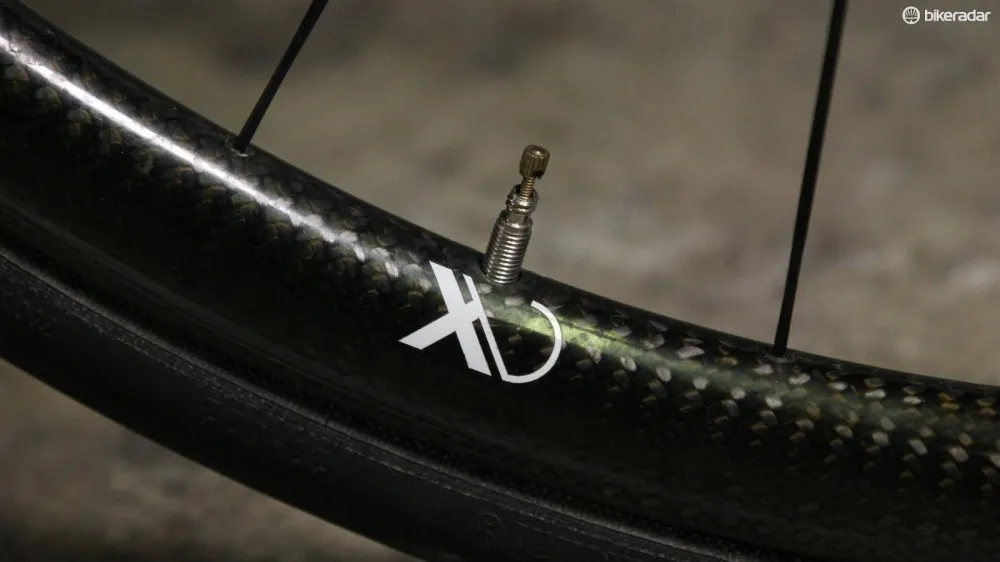
The carbon weave is a work of art on AX-Lightness' U28c wheels
AX’s U28c wheels weigh just over 1000g – that’s for clinchers with a rider weight limit of 100kg. Furthermore they can be pumped to 120psi, so are the business for hill climbing.
Think your 180g carbon saddle is light? Think again, the AX-Lightness Endurance saddle weighs just 78g. Admittedly there’s no padding, but you’d be surprised how bearable a sheet of carbon can be (even more so, when you're preoccupied with the torment the rest of your body is about to experience).
Total weight for bars and stem is a feathery 243g, whilst the Daedalus seatpost came in at 132g. This stuff, as the brand name suggests, is seriously light.
Weight saving doesn’t stop at the bike
UK CTT rules don’t mandate a helmet for a hill climb, so that goes out of the window, being replaced with a backwards cycling cap for added kudos. A Castelli speed suit is very comfortable, saving perhaps a couple of grams, and for footwear I used the Giro Empire SLX, which is both high performing and incredibly light.
Related: Giro Empire SLX road shoes review
Rider weight also needs to be at its absolute minimum. For a 6ft (183cm) rider, I can get down to 61.5kg / 135lb without a loss of power during the short hill-climb season. This is really pushing it and can’t be maintained for long, but it’s a must if you want to be at the sharp end.
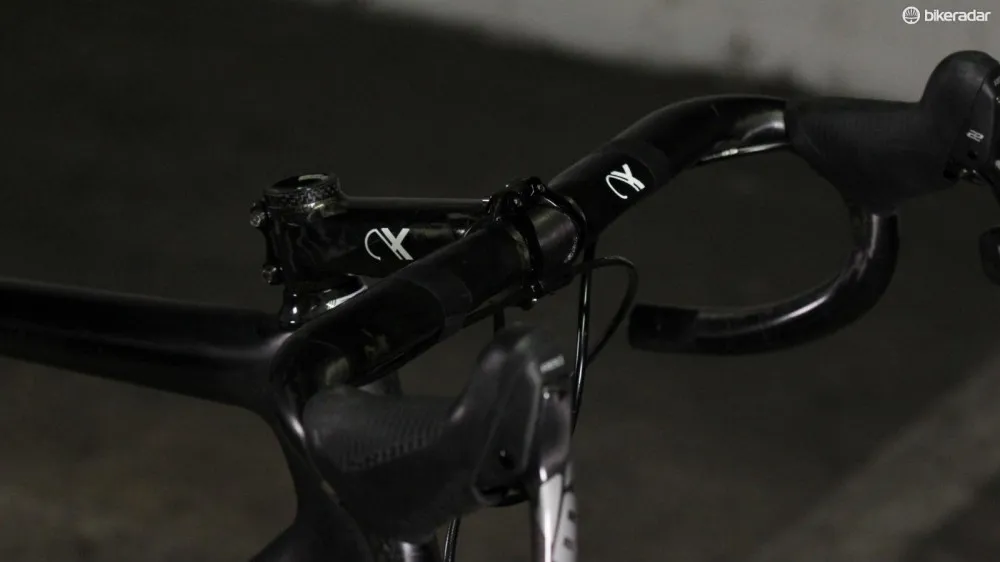
Nobody needs bar tape for three minutes of agony
Even with the bike down to a seriously light 5.8kg, there are still more tricks up the hill-climb obsessive’s sleeve. Nobody needs bar tape for three minutes of intense pain so that can go – a 38g saving.
Unless the climb has a downhill section, the big ring can go too, kissing goodbye to another 100g or so. No big ring, so no front derailleur – another 80ish grams saved. All those unwanted cables can do one too.
Finally the chain can be shortened a few links. This not only saves weight, but keeps the chain tighter, hopefully ensuring you don’t drop it, now there’s no front derailleur.
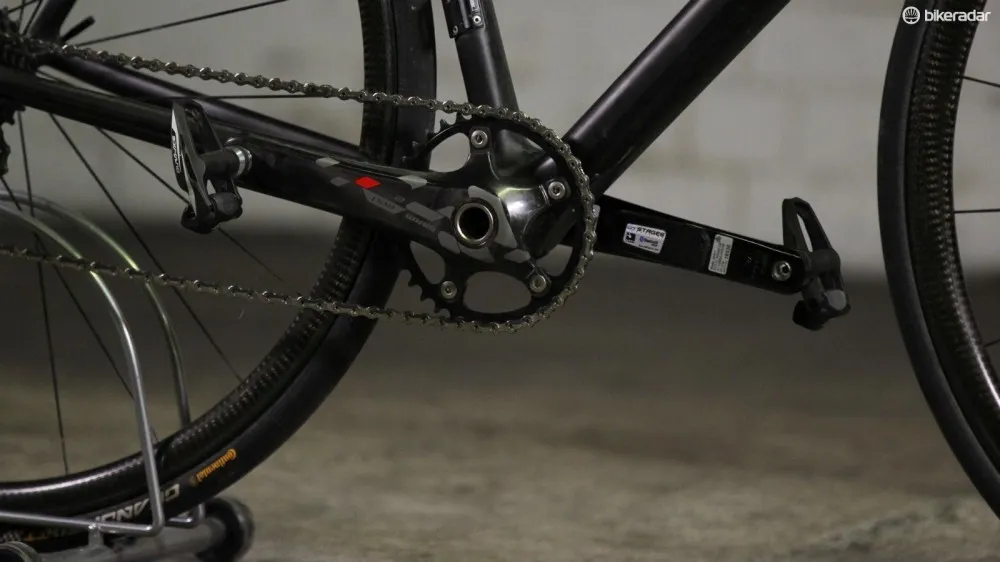
Single ring setup with a shortened chain
This actually caused me to fret: was all this weight saving really worth the risk of dropping the chain? Probably not, especially if I’d done the mechanicals myself. So in the end I went to the pros at Strada Cycles in Bristol. They’re great mechanics and had my single-ring setup working in no time.
Was the fettling worth it?
So with bike, components and rider shed of all unnecessary weight, how did I get on? Throughout the season I had my best-ever results, winning four open events and a couple of other podiums, and taking 16th in the national champs.
I was also training harder than ever and regularly putting out record personal power, but the importance of the lightweight bike cannot be underestimated. Roughly 1kg of weight lost will save 1.5 seconds on a steep three-minute climb, which isn’t much, but can be the difference between winning and being off the podium. So perhaps the extra kilo saved from all that fettling really made a difference.
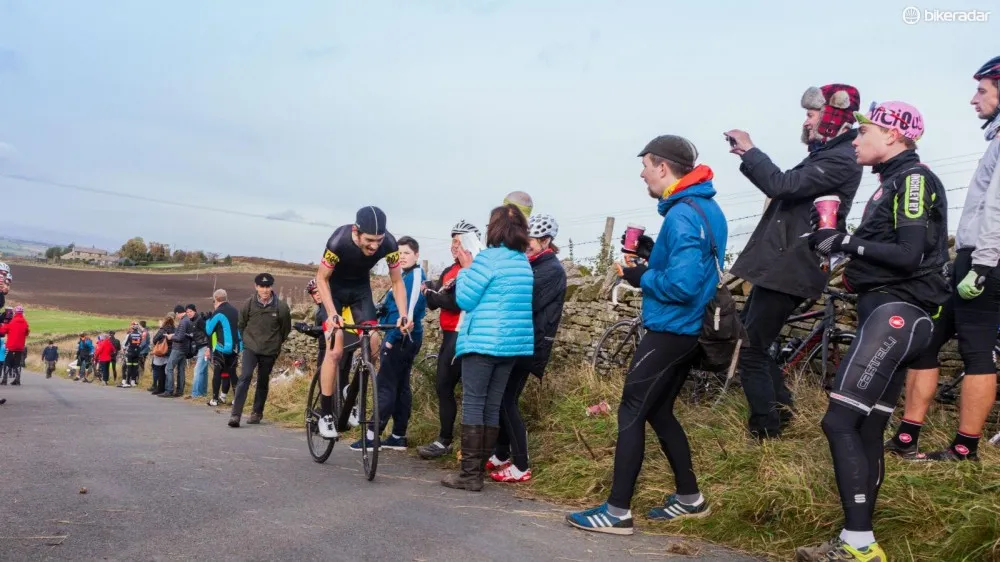
Hill climbs sure do hurt
The obsessive weight saving did though come at a cost. With a bike made of mostly carbon and a body of mostly skin and bone, the riding experience was far from comfortable. One race had a short bumpy descent to get to the start and I was reduced to walking pace by the firmness of the ride.
The best bits
There were three standout products from this experiment: the Ax Lightness wheels, the Rose frame and the Giro shoes.
As stated earlier, the wheels are simply stunning. They’ve all the stiffness and weight savings any rider could ever need and if you were lucky enough to own a set, you could easily ride them every day. The same cannot be said for other high end super light wheels – and this goes some way to justifying their cost.
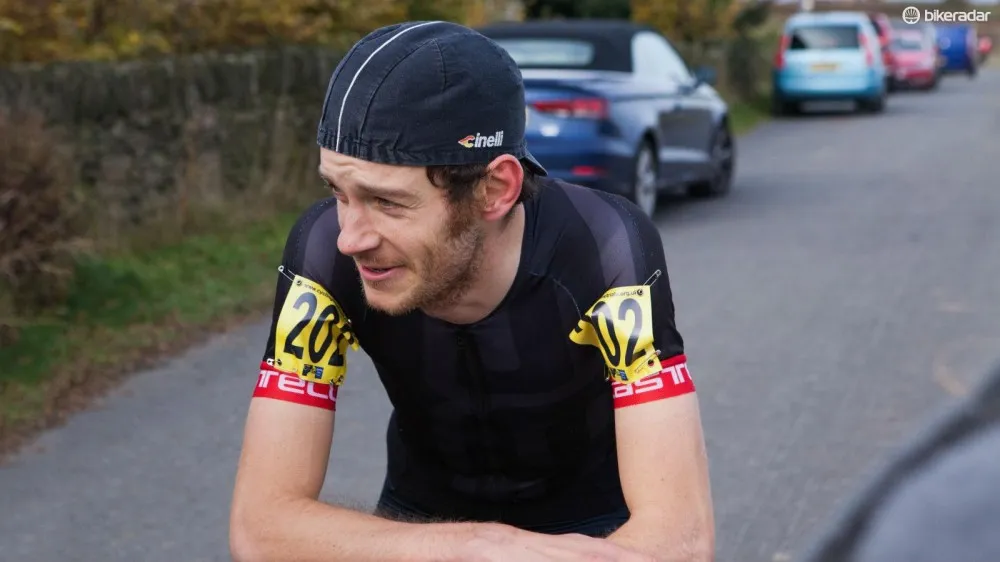
After the final event, thoughts turn to eating a lot of cakes
The Rose frame was once again everything you need in a modern-day frameset; lightweight and incredibly stiff. As a complete bike it also represents amazing value relative to spec – around £3,440 (about $5,160 / AU$7,165 at time of writing; Rose ships internationally) for a 5.85kg bike equipped with SRAM Red, carbon Ritchey finishing kit and Mavic R-Sys SLR wheels.
I was dubious about how secure the laces would feel on the Giro shoes while riding on the ragged edge, but was blown away by their comfort and performance. The laces are totally secure, whilst the lightweight carbon sole had virtually no give; all contained within a class-leading weight. Without (hopefully) sounding like a broken record, this was probably one of the best pairs of shoes I’ve ever used.
One things for sure, I probably won’t be riding a bike as supremely premium and focused as this again for a hell of a long time – and I’ll be sorry to see the back of it.
